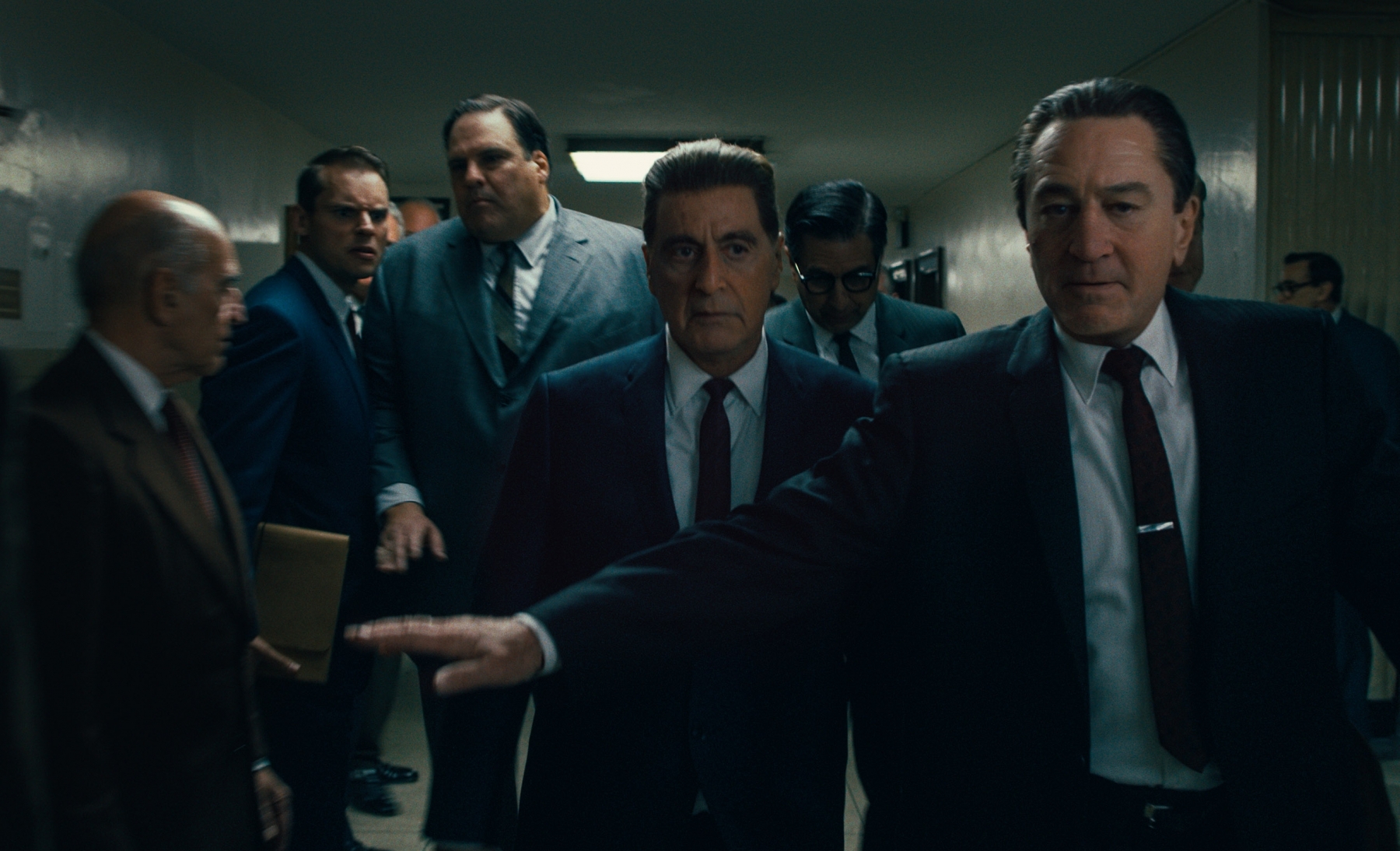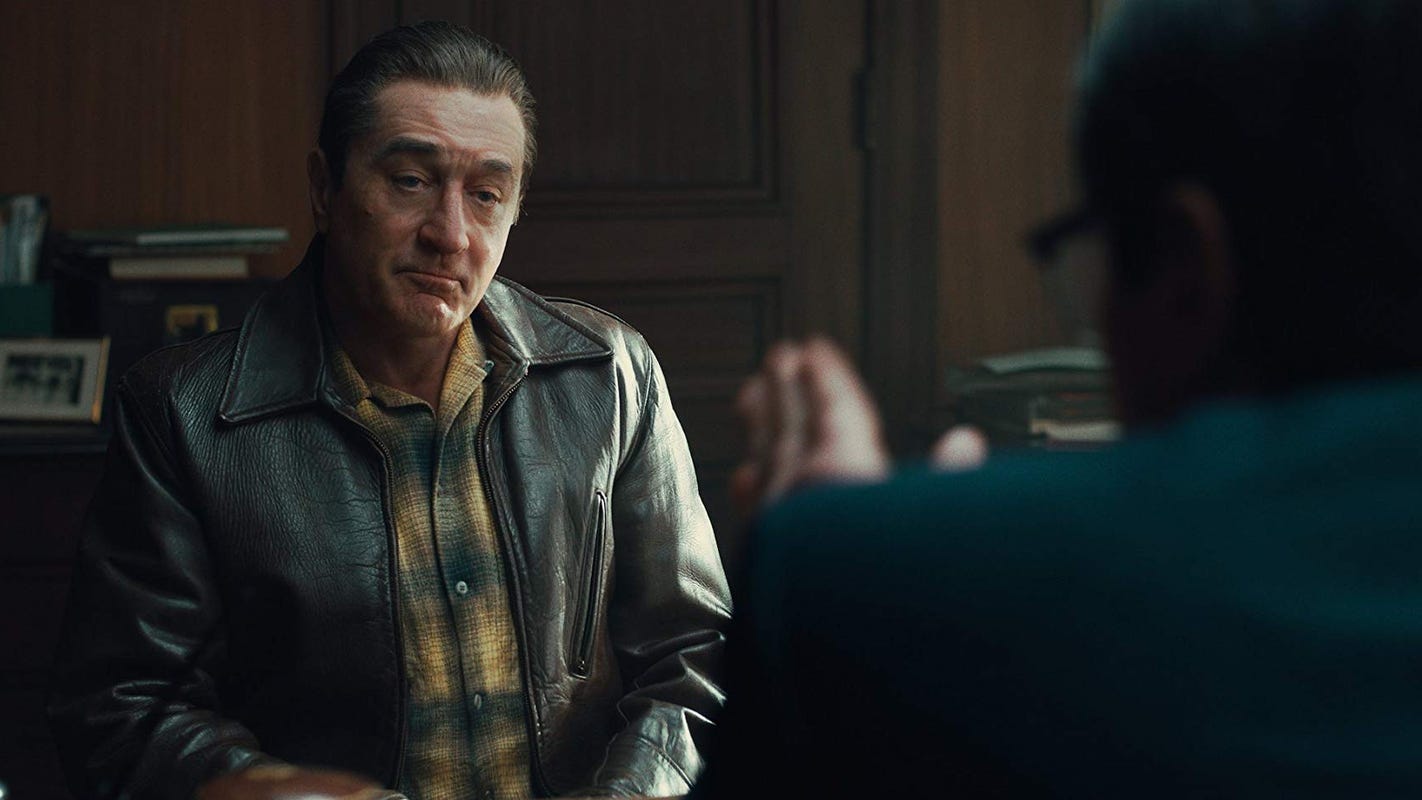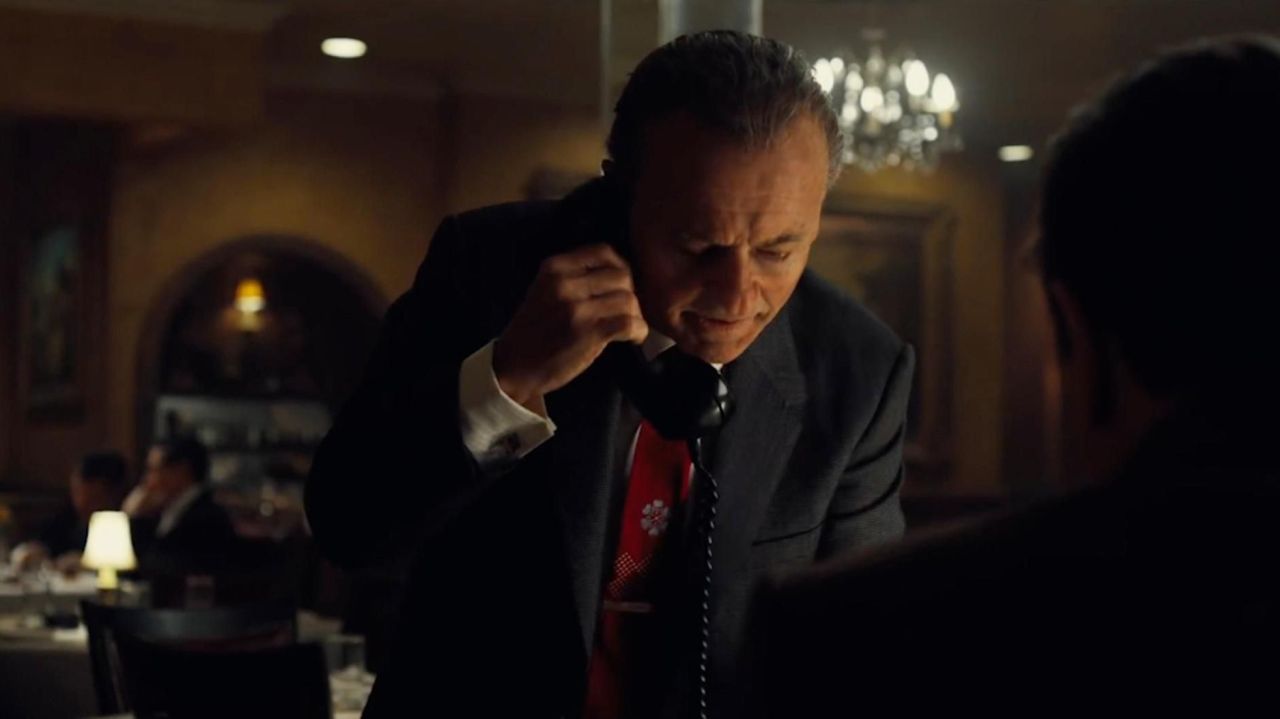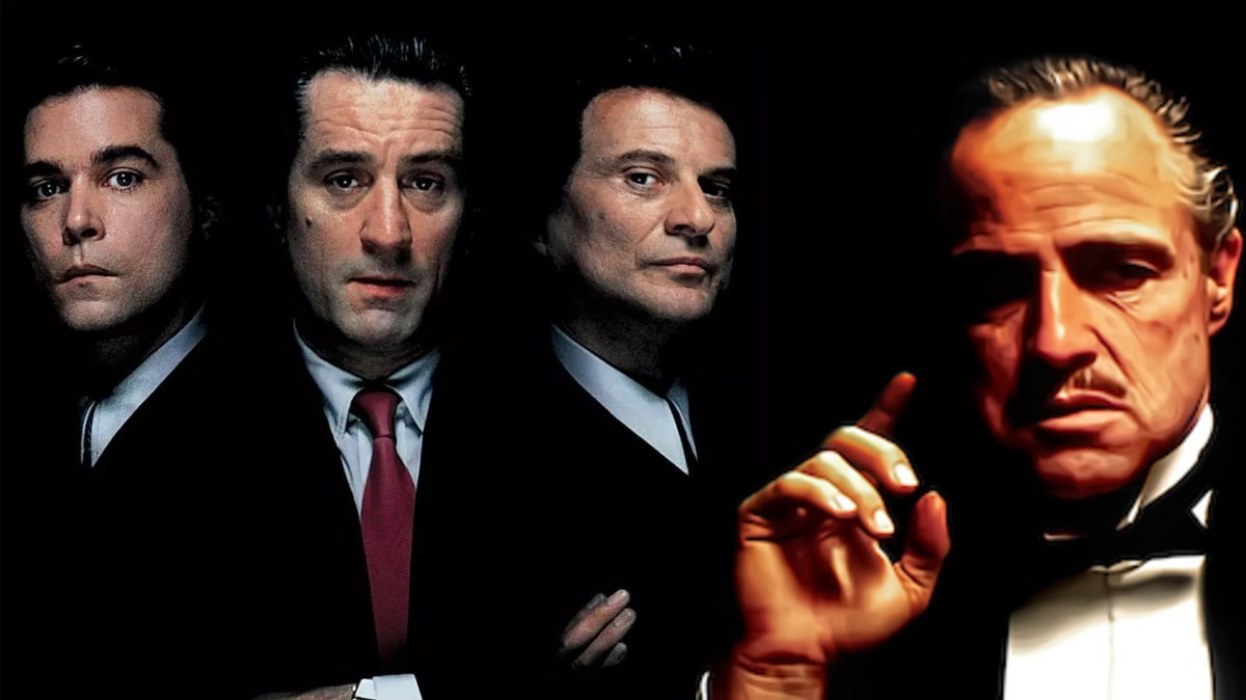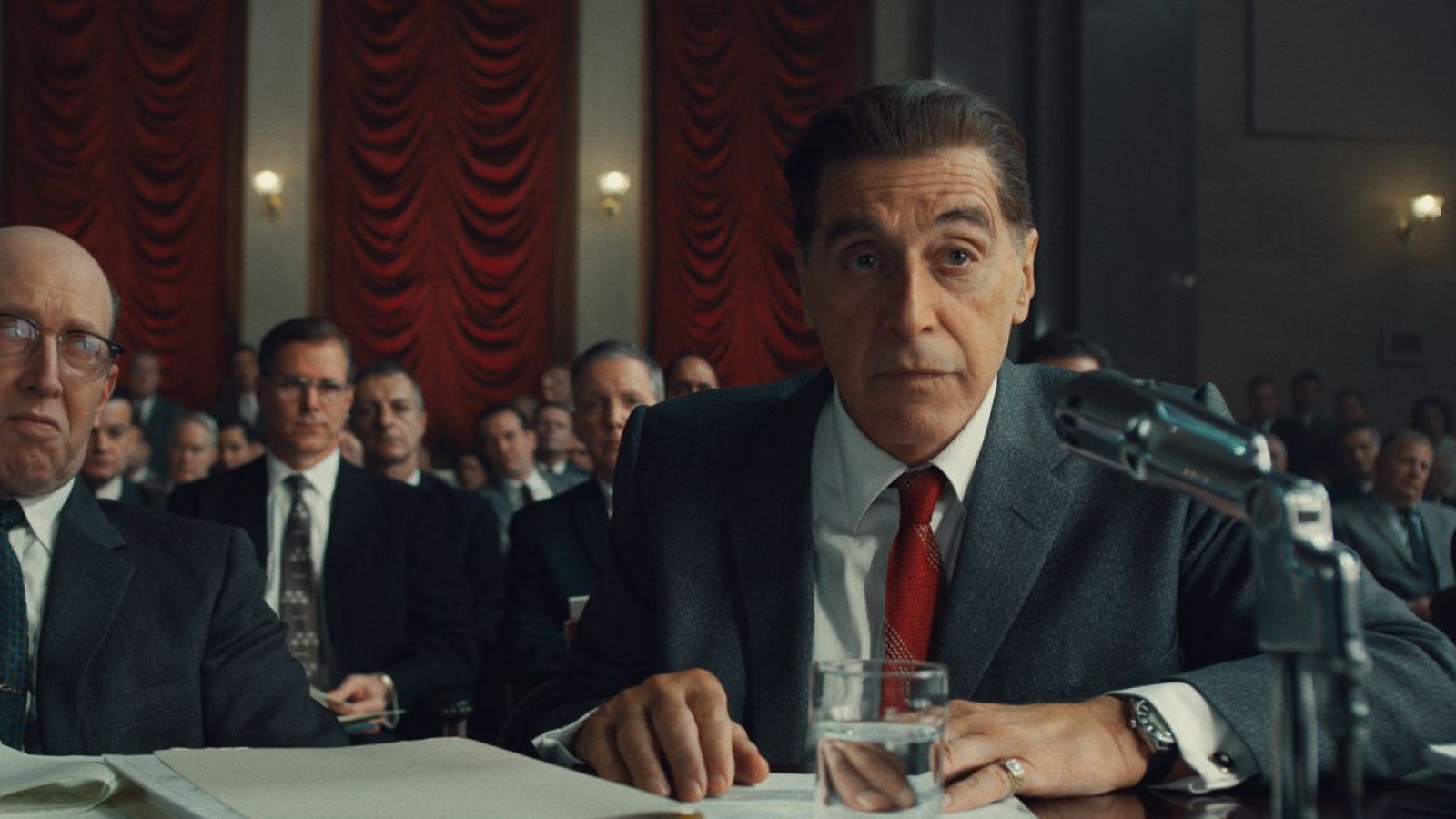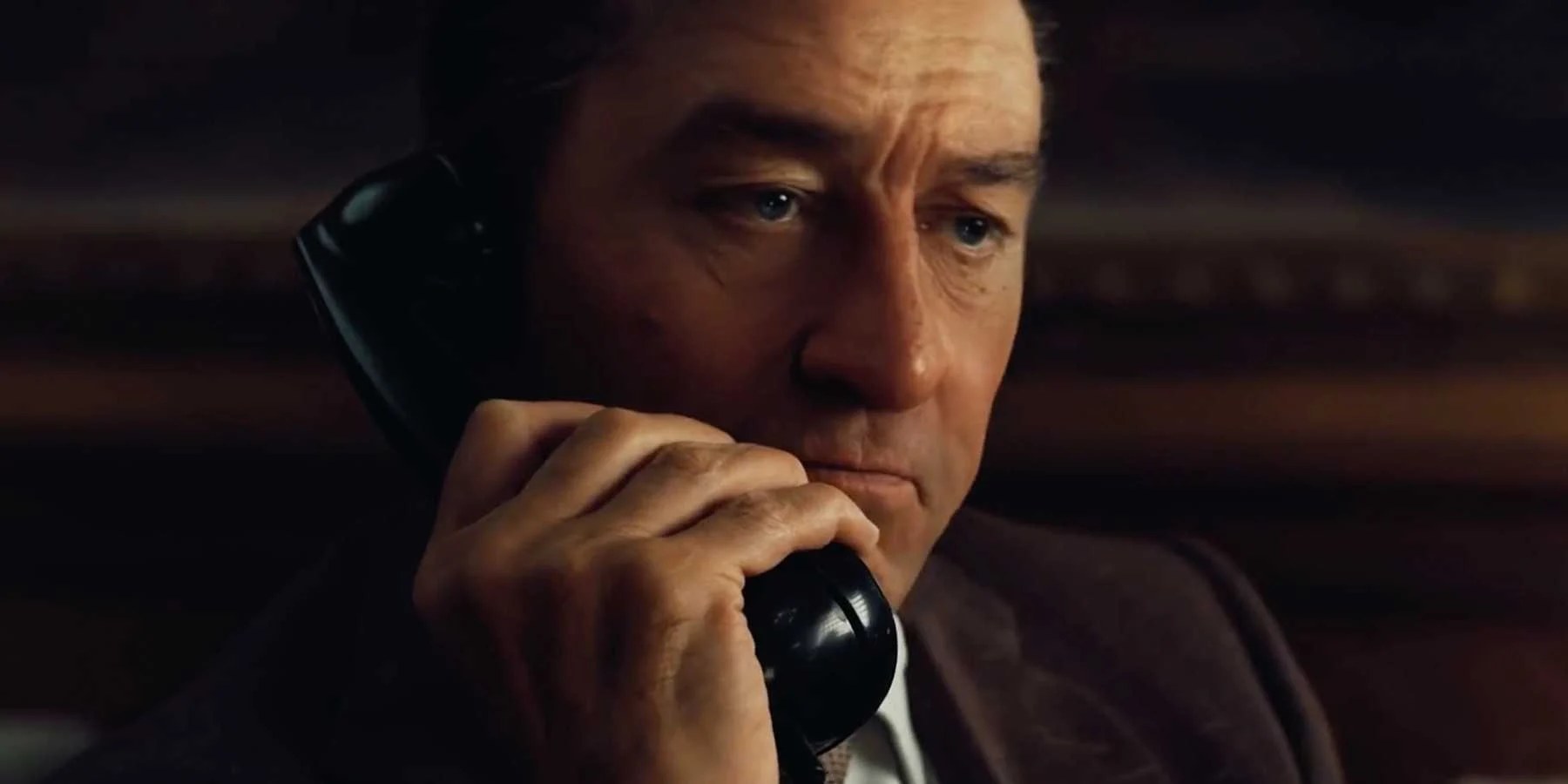From the dinner parties to the wives chatting it up with the mistresses to whacking a guy in a bar. Scorsese was sure to leave no stone unturned. No aspect of life untainted by the bonds of mobster brotherhood, for better or for worse. And for the longest time, few films have ever quite captured the breadth, scope and depth of Scorsese’s world. 2013’s The Wolf of Wall Street came close. If the quintessential mobster film is epitomized by the rise and fall of an empire, then Wolf doesn’t quite paint the full picture, though it achieves perfection in its own way. The Irishman though, it has done it…Scorsese has surpassed himself. It is everything you love about Goodfellas and so much more! At first glance, it’s easy to see The Irishman as similar to Goodfellas. A film surrounding the story of an Irish immigrant getting in leagues with the Italian American Mafia. There’s one key element though that thoroughly separates Irishman from the pack and that element is politics. Yes, the contraband, rackets and shakedowns you’ve come to know and love are still there but now there’s this intersection between grassroots populist parties and the criminal underworld. Labour unions.
It can be dizzying sometimes to keep up the ever entering and exiting dramatis personae of Irishman. There are only three characters you only need to know. The titular Irishman, Frank Sheeran, the head of the Pennsylvanian Buffalino crime family and Sheeran’s good friend, Russell and the almost President of the United State/union leader, Jimmy Hoffa. Together the three make history. The world of The Irishman is one that feels familiar and yet so much more complex than the one we knew from Goodfellas. A story about the intersection between political factions and organized crime. A tangled web of alliances, betrayals and wars that go as far as to influence the outcome of the Cold War. Namely, the mob’s involvement with the Bay of Pigs. The Irishman has so many moving parts and it is immaculate to witness how they all work in tandem so well together. On the one hand, we have Sheeran’s family and personal life. Played brilliantly by Robert De Niro, Sheeran is a man who prides himself on simple, cutthroat integrity who soon realizes that he must reckon with the man he is becoming.
We see it in the way his kids look at him. The way the public now treats him and his proximity to power and influence. From mob errand boy to confidant to a freaking president of a labour union. Following Sheeran’s journey felt as much a privilege as it was a roller coaster ride. By the end, you can’t help but feel an intimate connection with the man. Not unlike the way one would with Frodo and Sam by the end of Return of the King. Joe Pesci’s far more reserved in The Irishman. The bluster and hair-trigger temper we’ve come to expect of the man’s characters from films like Raging Bull and My Cousin Vinny isn’t here much. Instead, there’s a refreshing restraint and thoughtfulness to Pesci’s Russell Buffalino that is rather indicative of the actor himself. He’s not as reactive as Pesci’s other roles. Russell here is wiser, more cunning and far Machiavellian than the average mobster. He wears many faces and he wears them convincingly.
There’s always this vernier of false civility that preludes the savagery to come. Let’s just say with Pesci, you don’t see coming as much you should. I am happy to see the man come out of retirement and he’s still got it. It’s certainly helped along by Steven Zaillian’s excellent script. It’s easy to write mobster scripts but it’s near impossible to write one that truly stands on par with films like Godfather and Goodfellas. Films like Gotti or Legend may think they’ve nailed it with the right rise-and-fall plot beats with plenty of tough-guy dialogue. But there’s just an emptiness about them. A lack of authenticity if you will. The Irishman lacks nothing of that. Everything from the smallest nod to the quietest of throwaway lines carries such weight and meaning behind them. They can be the difference between life or death. Love or hate. They are a means to build bridges or tools with the power to tear them down with the slightest sign of disrespect. Zaillian understands this and refrains from indulgent monologues, though there are some pretty stellar ones in here.
So at this point, you may have noticed that we’ve been continually referencing Coppolla’s Godfather and Scorsese’ Goodfellas. It’s not just because we think they’re the barometres for what great crime films should live up to, which they are. It’s also because The Irishman marries the best of both films into one amazing three and a half-hour narrative. Godfather focused on familial politics, the business of the mob and its corrupting influence on the soul of Michael Corleone. Though it had its moments of levity, there was always this spectre of death and treachery that dogged it. Then there’s Goodfellas, a film that was as much a celebration of the Italian crime family as it was a cautionary tale. The emphasis from Scorsese was the thrill of being a mobster and the burdens that followed the high life. So while the film didn’t shy away from gruesome scenes and heavy subject matters, it always returned back to its bright lights and glamour. I mean that prison dinner scene man! The Irishman manages to temper the bright lights and raucous of Goodfellas with the sombre political machinations of Godfather. The first act is as Goodfellas as it gets with Frank getting in good with the mob and flying high with Russ but then Al Pacino’s Jimmy Hoffa enters the picture and it turns into a more darker affair. Pacino plays a man slowly self-destructing before our very eyes.
I won’t spoil what happens to Hoffa but let’s just say it ain’t pretty. Hoffa is a charmer and the man with a plan but when his labour union empire comes crashing with the interest of his allies, he suddenly becomes a shell of a man. Paranoid, desperate and rash in his decisions. You come to love Hoffa as Frank does and even as Pacino’s Hoffa descends deeper into the night, you can’t quite shake that feeling. The production quality on display here is nothing short of phenomenal. Everything from the lavish costume design to the homes of the 50’s to the grand action setpieces here are made for your immersion. I mean if you’re going to tell an expansive tale following multiple characters through multiple periods of time, you have better give us some stunning visuals to look at. 3 hours is no freaking joke. Fortunately, Netflix and Scorsese spared no expense in bringing their vision of the ’50s and ’80s to life with impressive attention to detail and creativity. That being said, I think it’s time we address the elephant in the room. The one thing that I’m sure has gotten a lot of people looking at Irishman a little cockeyed. I am of course talking about the de-ageing technology applied to Pesci, De Niro and Pacino.
Truth be told, it took some time for me to get used to it. The first time I saw it, I thought the skin tones look a tad off and the eye colours were a bit too pronounced. Over time, however, you learn to adjust and marvel at how far we’ve come in the film industry. It’s our beautiful Italian boys back in the heyday once more! Sure they look sort of shiny but it’s pretty much them underneath all those effects. After the first 10 minutes, you barely notice it. The contrast between the de-aged versions of their younger selves and their actual older selves really helps to sell the audience on how much times has passed between the events. The Irishman is Scorsese’s last great hurrah for the mobster film genre. The master has returned to show them whimper snappers just how it’s done. Though some many argue that the Italian American crime family dramas of yesteryear is past its prime, Scorsese has given them an extraordinary rebuttal. Films like The Irishman is a reminder to us all why we love the genre, rever Scorsese and are avid students of cinema. A remarkable reminder for the old guard and hopefully an inspiring moment for future generations. God, I love my job! And I bloody love this film! The Irishman is currently streaming on Netflix.
